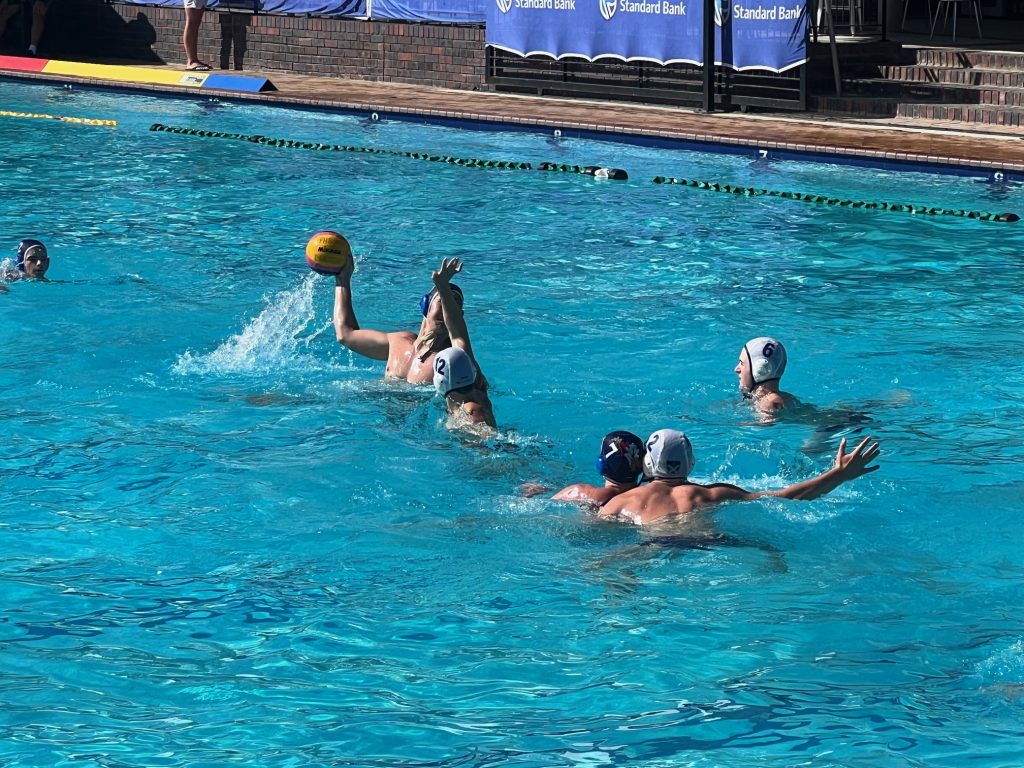Table of contents
An Introduction to Water Polo
Water polo is a thrilling, action-packed sport that has been enjoyed for centuries. The game was officially recognised by the royal family when Prince William of Wales became enthralled with the sport and even represented Scotland at university and national levels. It is a fantastic combination of physical strength, speed, agility, and teamwork that requires players to be highly fit and able to cover up to two miles in just one game.
After the Swimming Association of Great Britain introduced it in 1885, water polo quickly gained popularity due to its unique combination of fast-paced action and strategy. Players must have a high level of coordination as they manoeuvre around the pool using their arms, legs, and heads while attempting to score goals against their opponents. The rules are simple yet complex enough that you can adapt them to suit different levels of play, from beginner kids’ matches right up to competitive Olympic-level events.
Furthermore, it is an incredibly exciting sport that rewards players who show determination and skill both on an individual level as part of a team unit. It is easy enough for anyone to take part in but provides challenges even for experienced athletes, making it one of the best sports out there.
The Rules
Both players and spectators enjoy the exciting game of water polo. The aim of the game is to score more goals than the opposing team by getting the ball between the posts at the end of the pool.
Players have to tread water for the entirety of the game, as they cannot touch the bottom of the pool. Players make use of a technique known as ‘eggbeater’ which is more efficient than simply treading water. They can also move the ball around by passing it to a teammate or pushing it in front of them while swimming. It is worth noting that, apart from the goalkeeper, players can only hold the ball with one hand.
The match commences with a ‘swim-off’, where all players line up along their respective goal lines with the ball released into the middle of the pitch. The first team to reach it earns possession for their side, and play resumes after each goal, with all players required to be back in their own half at kick-off time.

What Skills are Required for Water Polo?
People should not take water polo lightly as a sport. Coaches expect their players to possess strong swimming skills as well as tactics and strategies. Boys and girls who join a water polo team quickly find out that it’s an exhilarating experience that requires dedication, hard work, and cooperation between teammates.
Developing the physical, mental, and emotional state of the athlete encourages each player to strive for good leadership qualities such as effective communication, motivation techniques, conflict resolution strategies, and positive thinking. . To excel at the highest level in water polo, a player needs to have certain physical abilities.
Endurance
Water polo is a sport that requires endurance, but not the type that you might think. It’s not about running for a long period of time but rather having the ability to perform with high intensity and power over short bursts. HIIT workouts have become popular in recent years as they closely simulate the kind of physical challenge water polo players face every game. The typical water polo game only lasts between 20 and 32 minutes. But during those few minutes, a lot is happening.
Players will experience rapid changes in their heart rate as they speed up and slow down throughout the game. They will have to quickly switch from offence to defence and vice versa, never losing focus or energy on either end of the pool. Endurance is key in order to keep up with the fast-paced nature of the game.
Strength and Speed
This sport requires a great deal of strength, both mentally and physically. It’s an incredibly demanding sport, as water polo players need a great deal of strength in their upper bodies in order to drive, pass, and shoot effectively. One way that teams regularly test the strength of their athletes is by having them do laps around the pool during warmups. Stroke efficiency is important, but so is being able to swim quickly without tiring too soon. This physical stamina can sometimes be more valuable than technique when it comes to competing against tougher opponents.
Swimming
Water polo also requires a great deal of strength, speed, agility, and endurance. We can see the need for swimmers to be proficient in all four main strokes: freestyle, backstroke, breaststroke, and butterfly.
It also requires an advanced level of comfort when swimming in deep water, even when being pushed or held underwater. In addition to the physical demands of water polo, players need to master many tactical elements. These include learning how to maintain good positions on defence and attack. Meaning, knowing where one should go at any given time, mastering the correct angles while shooting, reading the body language and positioning of their opponents during play, and developing the ability to pass effectively between teammates.
Power, Good Coordination and the Ability to Throw Well
The ability to track the trajectory of a water polo ball with the eyes and accurately predict the point that it will reach is an essential skill for success in this team sport. It requires intense concentration and adept anticipation, as well as fast reactions that enable players to extend their arm and hand to meet the ball at precisely the right moment.
Power is a blend of muscular strength, speed, and dexterity. It is an essential element in successful water polo performance because it enables players to make sudden movements without losing control of their bodies.
Having the ability to throw and pass the ball with accuracy and strength is key in this sport. You can acquire this skill through practise and consistency.
Water polo requires players to have excellent stamina too, as games can last for an hour or more in total. Participants must also use their skills in passing, shooting, and defending in order to succeed. The team dynamic is also an important factor; communication amongst teammates is key, as each player needs to know exactly where their teammates are positioned in order for any offensive or defensive plan to work effectively.
Health Benefits
Moreover, playing water polo can have health benefits as well, such as:
- Weight-loss
- Strengthens core
- Better Stamina
- Toning
- Gentle on the joints
- Social and problem-solving habits
Read more on the benefits of water polo here.

Key Takeaway
Water polo is a captivating sport that blends physical strength, agility, and teamwork. Players must master the art of manoeuvring in the water while aiming to score goals against opponents. From beginner matches to Olympic events, water polo’s adaptable rules make it accessible yet challenging. This dynamic sport demands endurance, strength, speed, swimming proficiency, and tactical prowess. It fosters physical fitness, mental focus, and teamwork, making it an exhilarating activity suitable for individuals at various levels of expertise.


